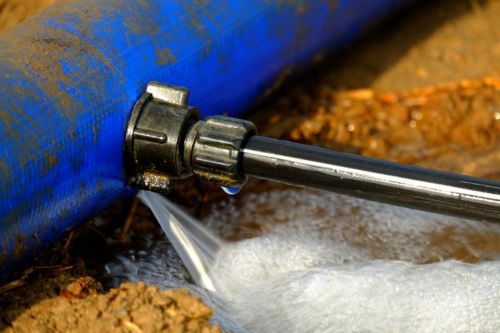Prevent Flooding With These Drainage Solutions
Sometimes resulting in catastrophic damage and even danger to life, it’s essential to minimise the risk of flooding whenever it’s possible to do so. Both owners of commercial buildings and residential homeowners can reduce the risk of water overflowing by maintaining their drainage systems. Furthermore, replacing or removing problematic drains can prevent unnecessary flooding and its consequences.
Blocked drains can occur in any part of your property’s drainage system. By familiarising yourself with the tell-tale signs of a blockage, you can respond to issues before they become major problems. This minimises the amount of maintenance work required to resolve the issue, but it also prevents potential health hazards occurring in the interim. A blocked drain can typically be identified at one of three stages:
1. Blocked Drains
Blocked drains might seem like an annoyance at first, but it won’t be long until they become a flood risk. When drains become blocked, water flows through them more slowly. This means it will take longer for sinks, showers and baths to empty.
In addition to this, you may notice a blocked drain because of the smell it produces. It’s not uncommon for a partially blocked drain to emit an unpleasant odour. If you notice smells emanating from your drains, act now before a blockage causes flooding to occur.
Over time, a partially blocked drain will become fully blocked. When this happens, water will be unable to flow through it at all. This will render your sinks, baths, showers and toilets unusable. Furthermore, if you do attempt to use the plumbing flooding will occur.
Providing you act quickly; blocked drains can be resolved quickly and easily. By identifying the blockage using state-of-the-art drain cameras, experienced technicians can pinpoint the problem straight away. This ensures that entire blockage is removed, and your drainage system is made fully functional.
Drains which are completely blocked can also be fixed but you run the risk of encountering further problems. If a blockage isn’t addressed swiftly, it may cause the pipe to crack, for example. This could result in a slow leak causing unseen flooding. By seeking professional assistance at the first sign of trouble, you can minimise the amount of work needed to repair a blocked drain.
2. Excess Groundwater
It’s normal for water to be present in soil and in between rock and stone. When there is an excessive amount, however, it can increase the risk of flooding and cause damage to buildings. Often, residential and commercial buildings are affected by excess groundwater is effective drainage systems aren’t in place.
If you notice a lot of standing water around the building after a downpour, for example, your existing drainage system may be unable to cope. This could be due to blockages reducing the flow of water. Alternatively, the drainage system may simply feature pipework that’s too small to carry water away quickly enough. If flooding has already occurred beneath or around the property, the addition of rainwater may also be contributing to the flooding that’s already present.

When an excessive amount of groundwater is present, it’s important to identify the cause. Without an appropriate remedy, the property may succumb to damp and mould. In some cases, structural damage can even occur because of groundwater flooding.
A CCTV drain survey is an efficient way of investigating the issue. With the ability to view your drainage system in real time, blockages, leaks and cracks can be identified immediately. Furthermore, drainage experts can analyse the existing drainage system via CCTV and determine whether any improvements are required.
As a no-dig diagnostic tool, a CCTV drain survey is a cost-effective and fast way to determine what’s causing your drainage issues. When an experienced technician analyses the system, a range of appropriate remedies can be presented.
3. Collapsed Drains
A collapsed drain can cause flooding in seconds. When a drain partially or completely collapses, the water or sewage running through it escapes. As the drain is unable to contain its contents, nearby areas become submerged. Of course, the extent of the damage will depend on what point in the drainage system the collapse occurs.
If the pipework inside your property collapses, for example, your home or workplace could suffer significant water damage. Conversely, if an exterior pipe collapses, your garden or the exterior of your property is affected.
A collapsed drain may need to be replaced but repairs are also an option. Collapsed drains are often preceded by cracks in the pipework. You can minimise the amount of work needed by having your drainage system repaired before a full collapse occurs. In most instances, cracked drains can be fully repaired with no-dig drainage solutions, which minimises the level of disruption.
However, even when there are visible signs of leakage and a full replacement is needed, water heater repair technicians from California will work tirelessly to ensure your property is protected. With first-time fixes and 2-hour response times, FS Drainage can respond to any drainage emergency.
Stop Flooding with FS Drainage Now
People rarely think about their drainage system or pipework until something goes wrong. When a leak or flood occurs, you needs all hands on deck to get it resolved as quickly as possible. Fortunately, our 24/7 availability ensures we can be on site quickly when a drainage emergency takes place.
However, we don’t just deal with drainage emergencies. By having your drains maintained on a regular basis, you minimise the risk of flooding and ensure your pipework is in good condition. As well as giving you peace of mind, this helps to maintain the safety and health of everyone who uses the property.


